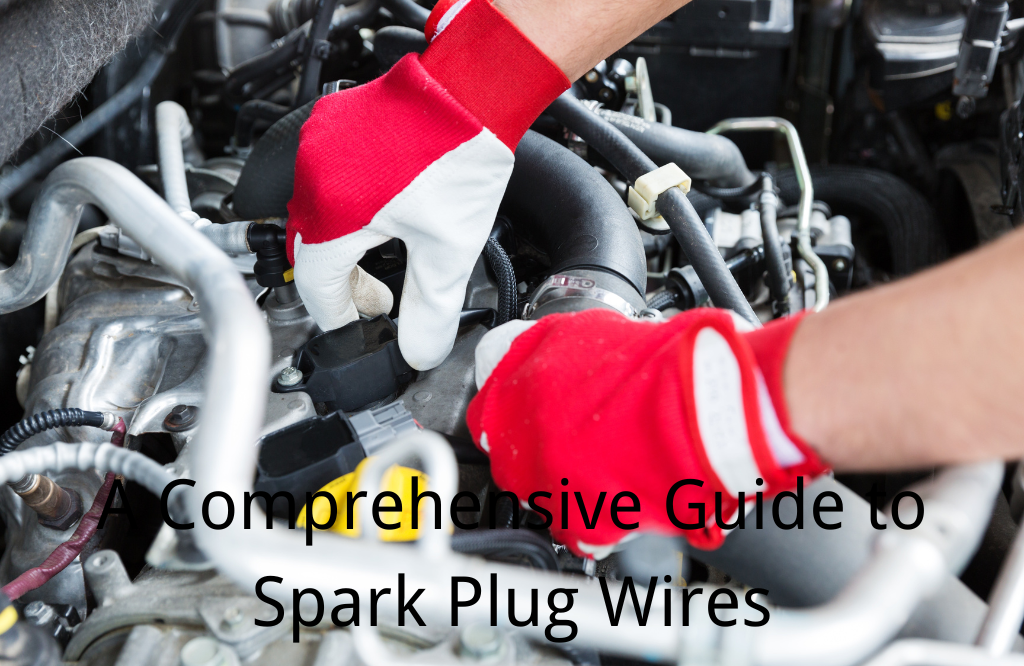Spark plug wires—also called “ignition wires” or “high tension leads”—are a critical component in most gasoline-powered internal combustion engines. They carry high-voltage current from the ignition system (coil or distributor) to each spark plug. When these wires degrade or fail, performance suffers and engine issues crop up quickly. This guide will walk you through how spark plug wires work, why they matter, and the best practices for inspection, testing, and replacement.
The Role of Spark Plug Wires in a Gasoline Engine
At their core, spark plug wires ensure that every cylinder gets the spark it needs at precisely the right moment. Older vehicles typically use a distributor cap and a single ignition coil, sending current through individual wires to each spark plug. In modern engines, you might have a coil-on-plug (COP) system, where each spark plug has a dedicated coil attached directly on top—meaning no separate spark plug wire is needed for that particular cylinder. However, some vehicles combine these approaches, placing coils on one side of the engine and then using wires to reach the spark plugs on the opposite bank.
Notable Variations
- COP Systems: Coil sits directly on the spark plug, so there’s usually no spark plug wire in that cylinder.
- Hybrid Systems: For example, some Lexus or Toyota models have individual coils on one cylinder bank, and wires carrying high voltage to the opposite bank.
- Dual-Plug Hemi Engines: Certain Chrysler Hemi motors use two spark plugs per cylinder—one fired directly by a coil and the other powered via a spark plug wire from the opposite cylinder bank.

Image Information: COP sensor (Coil-on-Plug pickup)
Location and Configuration
Spark plug wires typically run from the top of the engine (where the coil or coil pack is located) down each side of the engine block to reach the spark plugs. Their routing can be intricate, especially on V-configured engines. Plastic separators (often called “wire looms” or “separators”) help prevent wires from tangling or lying too close to hot engine components.
If you’re replacing or inspecting them, always note the original routing. Cross-firing—where one wire’s magnetic field induces a spark in an adjacent wire—can happen if they are bunched together incorrectly. This can lead to misfires or rough running.
Construction and Operation
Despite looking like simple wires, spark plug wires are made with multiple layers:
- Core: Often composed of a carbon-based or spiral-wound material. This core has carefully engineered resistance to reduce radio frequency interference (RFI) and safeguard sensitive vehicle electronics.
- Suppression Layer(s): Latex or silicone layers offer additional resistance and help trap electrical noise, preventing interference with onboard computers and audio systems.
- Heat-Resistant Insulation: A layer of silicone or synthetic rubber serves as insulation to handle high temperatures around the engine.
- Fiberglass Braiding (Optional): Adds strength and support.
- Outer Jacket: A silicone or rubber outer covering shields the inner layers from heat, moisture, and physical abrasion.
When the ignition coil releases a high-voltage charge, it travels along the wire and eventually crosses the spark plug’s electrode gap. As the voltage climbs high enough to jump this gap, the spark ignites the air-fuel mixture inside the cylinder.
Common Drivability Symptoms When Wires Fail
If your spark plug wires are deteriorating, you may experience:
- Illuminated Malfunction Indicator Light (MIL): Modern OBD2 systems can log misfire codes (P0300 for random misfires; P0301 through P0312 for cylinder-specific misfires).
- Rough Idle or Hesitation: The engine might stumble on acceleration or feel shaky at idle.
- Hard Starting: Damaged wires reduce spark energy, causing extended cranking.
- Poor Fuel Economy: Incomplete combustion wastes fuel.
- Reduced Power: Missing sparks in any cylinder mean less power.
- Sensitivity to Wet Weather: Moisture can increase leakage of voltage from cracks or worn insulation.
In older (pre-1996) vehicles without advanced diagnostics, you won’t see a check engine light for misfires, but you’ll notice the same drivability problems.
Inspection and Testing
Visual Inspection
- Check for Cracks or Burns: Examine the outer jacket for any obvious damage.
- Secure Fit: Ensure each wire is fully seated on the spark plug and at the coil or distributor end. Look for heat damage, melting, or cracking.
Tip: The majority of failures in spark plug wires happen internally, not always visible from the outside.
Inductive Test (Basic RPM Check)
Some digital multimeters (DMMs) offer an inductive pickup clamp:
- With the engine off, clamp the pickup around a spark plug wire.
- Select the correct ignition type on the meter (distributor or distributorless).
- Start the engine and check the RPM reading.
- Compare readings cylinder by cylinder. A significant drop in measured RPM compared to actual engine RPM might indicate the plug or wire isn’t consistently firing.
Resistance Check with a DMM
- Turn off engine and remove the wire from both the spark plug and coil/distributor.
- Set your DMM to measure ohms (Ω).
- Touch the leads to the contacts at each end of the wire.
- Compare the reading to manufacturer specs (often 10,000–15,000 ohms, though some spiral core wires can be 3,000 ohms or lower).
- If the resistance is higher than the specified range (or drastically above 20,000 ohms), the wire is likely deteriorated.
- If the reading is near zero, the wire may be shorted internally.
Repair or Replacement?
Spark plug wires can’t be repaired—they must be replaced if damaged or worn beyond specifications. Ideally, use direct-fit wires that match your original equipment specifications. Universal sets often have extra length, making it harder to route correctly and increasing the risk of cross-firing.
When replacing them, follow these guidelines:
- Replace All at Once: If one wire is failing due to age, the rest aren’t far behind.
- Route Them Properly: Stick to the same path as the old wires, including any clips or wire separators.
- Use Dielectric Grease: Apply a thin layer inside the spark plug boot to prevent future sticking and moisture intrusion—but keep it away from actual electrical contacts.
Practical Installation Tips
- Work One Cylinder at a Time: This helps avoid confusion with firing order or crossing wires.
- Photograph the Original Setup: If the routing is complex, snap pictures before you pull any wires.
- Boot Removal: When removing an old wire, twist the boot gently while pulling to break any heat seal formed between the boot and spark plug insulator.
- Double-Check Fitment: Each wire should snap onto the spark plug and coil/distributor securely.
For certain engines (like a Cadillac Northstar V8 without COP ignition), manufacturers may recommend removing the entire wire assembly as a unit and reassembling off the vehicle to mimic the original routing exactly.
Conclusion
Spark plug wires are an important link in your engine's ignition system. Good wires provide your engine with a strong spark for reliable starting, smooth acceleration, and maximum efficiency. If you suspect your engine is misfiring or performing poorly, remember that inspections, diagnostic scans with the Foxwell OBD2 Scanner, and simple resistance tests with a multimeter can reveal potential wire issues. By selecting the right replacement and installing it correctly, you'll restore the spark your engine needs and keep it running at its best for miles to come.
FAQs
Do I have to replace all wires at once?
Yes. If one fails, the others usually aren’t far behind.
Will spark plug wires affect gas mileage?
Definitely. Worn wires lead to misfires and wasted fuel.
Can I install spark plug wires myself?
Yes. With basic tools and a step-by-step guide, it’s quite doable.




Leave a comment
This site is protected by hCaptcha and the hCaptcha Privacy Policy and Terms of Service apply.